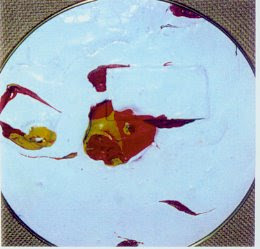Living with Nature School on Blog
Paaralang Bayan sa Himpapawid (People's School-on-Air) with Miss Grace Velasco
738 DZRB AM Band, 8 to 9 evening class, Monday to Friday
This is a lesson I learned early in life. That being kind will not always result to something good.
Cautiously I enlarged the initial hole in the shell of a chicken egg being incubated, so that the chick will find it easier to free itself into the world. I even helped break part of the egg shell exposing the bald chick.
Fish fry hatching, acrylic painting AVR
Wrong kindness. The chick I helped was weaker that those that hatched normally. Its legs were weak. And since it could not cope up with the other chicks, it became stunted (bansot). Why is this so?

The chick I helped failed to develop its muscles fully; its lungs did not get enough oxygen. Its nerves were not stretched. Even the sound it made was not fully modulated. The transition period from its world in the shell to the outside world came too abrupt. I did not realize that the act of hatching characterized by prolonged struggle interspersed with brief rest is necessary in the development of the emerging chick.

I did a similar experiment with the chrysalis of a swallowtail butterfly (Papilio alphenol), a black species with several white and orange yellow spots, its wings sporting a pair of tails for which it is called. When I saw the translucent creature ready to emerge, I helped open the crack that runs like a zipper along the thin chitinous casing.
Again, this proved me wrong. The result is a butterfly with uneven wings, and it took the creature a longer time to venture into its first flight than those that metamorphosed naturally. Could this be the same reason caesarian babies are less healthy and developed than normally born babies?
Birthing is a process that prepares a newly born to face the realities of life. ~


No comments:
Post a Comment